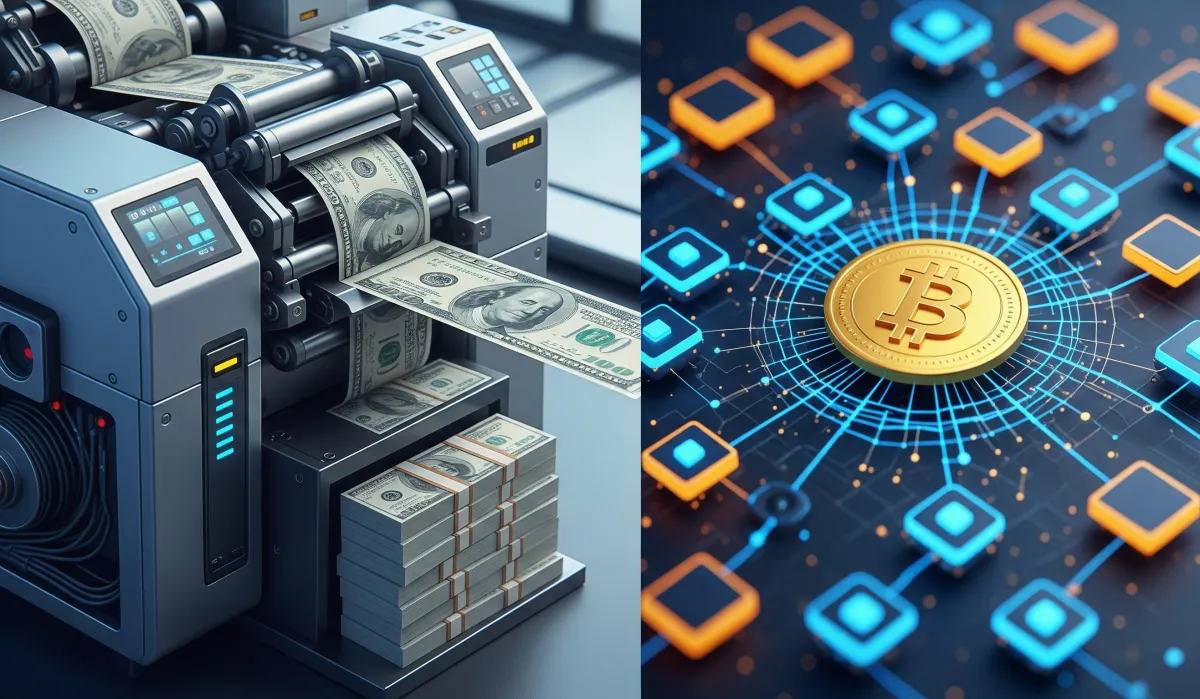
Inflation vs Bitcoin: What’s Worth More, A Dollar Today or Tomorrow?
🎧 Listen to this article:
English
Spanish
⏱️ Estimated reading time: 5 - 7 minutes
Have you noticed how money seems to buy less and less? With the same bill, you get less food, fewer clothes, less bread. That phenomenon has a name: inflation. And it’s directly tied to how the money system we use—fiat—actually works. Here, we’ll break it down in plain language, with simple examples and real-world cases like Venezuela and Zimbabwe; then we’ll contrast it with Bitcoin, which plays by a very different set of rules.
Fiat Money, Explained Simply
Fiat comes from Latin and means “let it be done.” It’s money by decree: it has value because the government declares it legal tender, and because we all trust it will still be accepted tomorrow.
For decades, many currencies were backed by gold. That changed in 1971, when the U.S. abandoned the gold standard. Since then, the value of money rests entirely on collective trust and the discipline of monetary policy. But if too much is printed, each bill’s purchasing power thins out, and prices rise.
When Money Printing Breaks Trust: Venezuela
Venezuela shows what happens when money creation is used chronically to cover deficits. Between 2008 and 2021, the country carried out three currency redenominations:
2008: The Bolívar Fuerte was introduced (3 zeros removed).
2018: The Bolívar Soberano arrived (5 zeros removed).
2021: The Bolívar Digital took over (6 zeros removed).
That’s 14 zeros erased in total. More than just accounting, it was a sign of lost trust—driven by deficit monetization, controls, and distortions that pushed the economy into hyperinflation.
When that happens, people seek refuge outside their local currency: U.S. dollars in cash, durable goods… and crypto. In Latin America, the use of stablecoins pegged to the dollar—like USDT and USDC—has become everyday practice for saving, payments, and remittances, especially in environments of devaluation and capital controls.
Inflation: Money Gets Thinner

Inflation isn’t some abstract concept, it’s your money losing weight. If $10 once bought 10 loaves of bread and now it only buys 7, the bread didn’t change; the value of your bill did.
Every country lives with inflation. In advanced economies, it’s usually low, between 2% and 8%. But magnitude makes the difference. Argentina ended 2023 with annual inflation above 200%. Turkey saw readings close to 70% in 2024. Zimbabwe, in 2008, printed notes of 100 trillion dollars that barely bought a loaf of bread. And Venezuela brutally showed it by chopping off 14 zeros in three redenominations.
The lesson is clear: when fiscal and monetary policy lose their anchors, the currency loses credibility, and people look for alternatives.
Bitcoin: Rules Instead of Politics
Bitcoin (2009) was born with a bold idea: digital money with built-in scarcity, governed by code rules instead of political decisions. Its design caps the total supply at 21 million bitcoins.
In his white paper, Satoshi Nakamoto described a system where transactions are validated collectively on a blockchain, and where the issuance of new bitcoins was programmed from the very beginning. No politician can just fire up the printing press.
The Halving: Bitcoin’s Internal Clock

One of Bitcoin’s most important rules is the halving. Every 210,000 blocks (roughly every four years), the network cuts in half the reward miners earn for creating new blocks.
In 2009, each block rewarded 50 BTC.
Successive halvings brought it down to 25, 12.5, 6.25…
In April 2024, the most recent halving occurred, and the reward is now 3.125 BTC per block.
This mechanism slows down the release of new bitcoins until the cap of 21 million is reached. It acts like an internal clock, reinforcing programmed scarcity and giving the system predictability.
👉 Want to go deeper from the ground up? Check out our post "Bitcoin Powering a Global and Decentralized Economy".
The Money Illusion
You get a raise and feel like you “have more.” But if prices climb faster, you actually have less. That bias is called the money illusion. Understanding it helps avoid confusing nominal numbers with real purchasing power, a crucial step for smarter saving and for choosing the right currency to hold value in.
The New Pulse of Global Money

The fiat system is undergoing a transformation driven by the soaring debt of nearly every country on the planet. That burden strains stability and highlights the limits of a model built on constant issuance and credit expansion. But it also sparks new experiments. Some countries have stepped into the vanguard: El Salvador, adopting Bitcoin as legal tender; Bhutan, exploring hydro-powered mining to diversify its economy; and the United States, debating the future of the dollar in the face of digital innovation and competing alternatives.
Bitcoin isn’t a magic wand, and it doesn’t instantly replace the global economy. But it does offer clear rules, programmed scarcity, and transparency. Understanding how it works lets us take part in this shift with perspective and answer the question posed at the start: Is your money worth more today—or tomorrow?
Verified Sources (links)
Federal Reserve History – Nixon Ends Convertibility of U.S. Dollars to Gold (1971). https://www.federalreservehistory.org/essays/gold-convertibility-ends
Central Bank of Venezuela – Reconversión monetaria 2008, 2018, 2021. http://www.bcv.org.ve/
La República – Venezuela le ha quitado 14 ceros al bolívar en 13 años. https://www.larepublica.co/globoeconomia/venezuela-le-ha-quitado-14-ceros-al-bolivar-en-13-anos-por-medio-de-tres-reconversiones-3212621
Chainalysis – Latin America: Cryptocurrency Adoption and Devaluation as Drivers (2023). https://blog.chainalysis.com/reports/latin-america-crypto-adoption-2023
Chainalysis – What You Need to Know About the Bitcoin Halving (2024). https://www.chainalysis.com/blog/bitcoin-halving-2024/
Shafir, Diamond & Tversky (1997). Money Illusion.Quarterly Journal of Economics.https://academic.oup.com/qje/article-abstract/112/2/341/1849852





